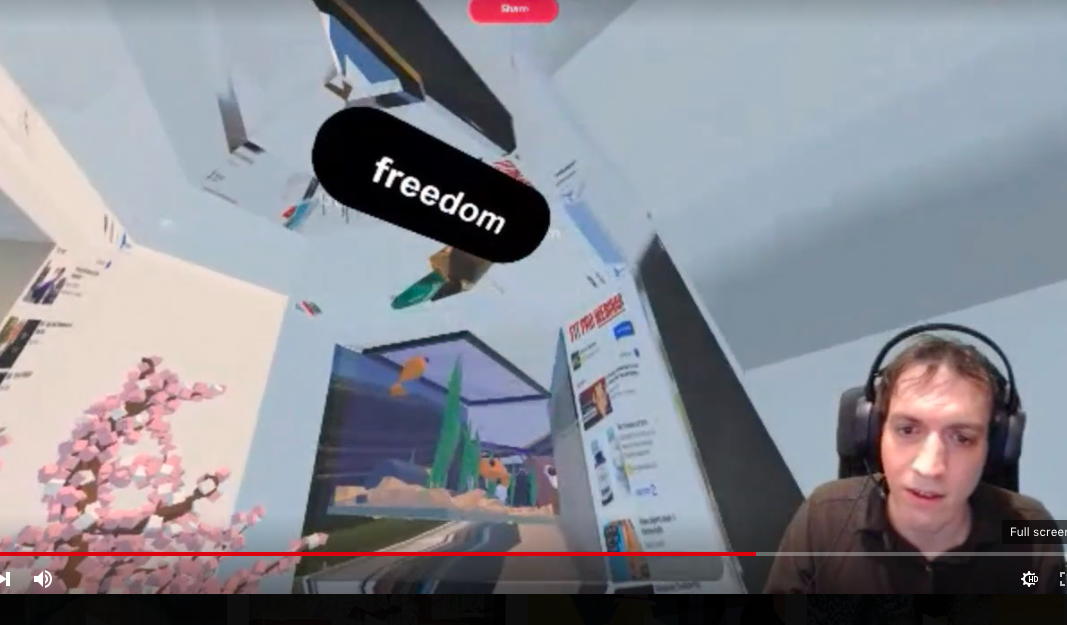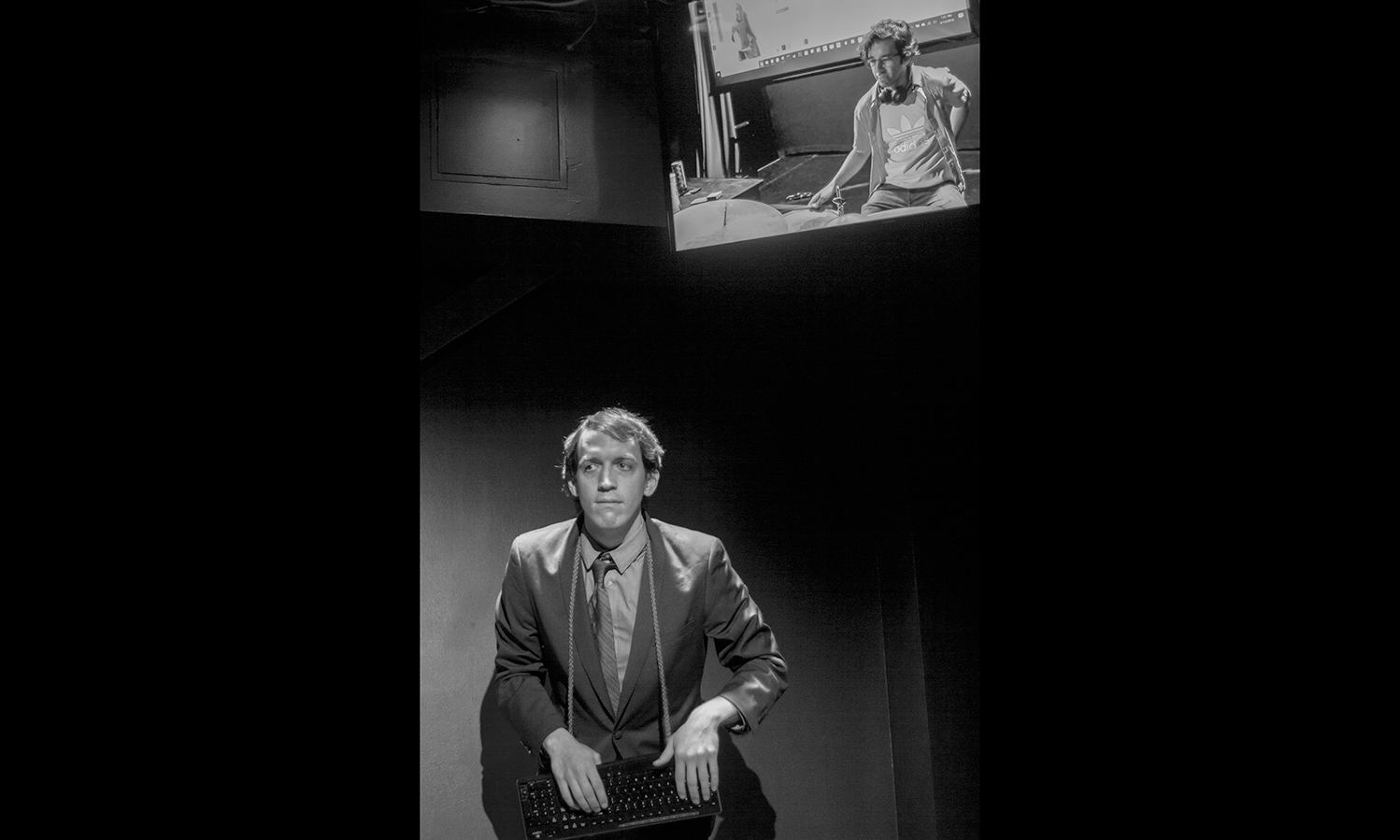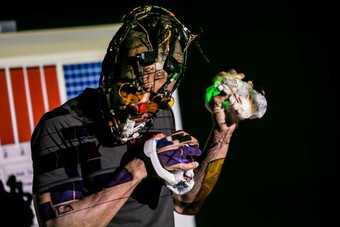Todd: What is your “model user”?
Martim: My model user is very on-task, knows where everything is online and on the computer, doesn’t fumble around and doesn’t type in URLs mindlessly just out of pure instinct... A lot of times being online, for me, is a feeling of, “Ugh, I just want to zonk out for a couple minutes.” I type in, for example, gizmodo.com, but it’s like, “This sucks, I already saw these headlines.” Then I type in three other websites and end up back on Gizmodo thirty seconds later because it’s automatic. If I’m trying to zone out there are very predefined actions I’m taking I’m not really aware of.
But as a “model user,” I would not be doing that. I would be aware of everything I’m doing.
Todd: I’ve definitely had that come up. I have these reflexes, and unfortunately they often emerge when I’m stuck on something I’m working on. I’ll go into my address bar and hit a “G” and hit “enter” and then I’m in my email. Or I’ll hit a “T” and hit “enter” and then I’m on Twitter. It’s really funny when I do that not on my computer, so it’s just a Google search for the letter G or the letter T. What a fool.
Martim: Ha, what was that letter again? I’mma look it up.
I do the same exact thing. I rely on the autofill of my browser to take me to those websites that it knows I go to a million times a day. One of those is the New York Times, which is nytimes.com, so I’ve gotten used to typing “nyt” and then have it autofill, but I’ve misspelled it more than once as “nut” and I’ve pressed enter. I just ended up getting several Google searches for “nut” and then it started taking me to nuts.com, which is just a website for selling nuts. It’s kind of a wake-up call, like: “Hey you’re doing the zone-out browser letters again.”
Todd: Capturing those unconscious behaviors for performance creates an interesting challenge. I know of people who do this, but I’ve been too scared to just leave a screen recorder running to the point that I forgot it exists to better capture my subconscious internet behaviors and then do something with them. I don’t think “model user behavior” is super performatively interesting.
Martim: Yeah, it’s not interesting. But that’s exactly the point. When someone’s looking at my screen I don’t want them to tune into my neuroses and the quirks of my personality by watching me do stuff online.
Performing the act of using the internet and having an audience observe creates a more humanist way of looking at how people interact online.
Internet Mixtapes
Todd: Thinking about it, my project HitchHiker plays with this idea too. It’s a Chrome extension that lets a performer take over the audience’s web browsers—leading them around to different websites and making performative interventions with image/audio effects. It’s not necessarily “model” user behavior, but as a performer anytime you go to a new site, everyone in the room gets brought to that site. So you’re probably not going to go to nuts.com.
You’re going to be thinking about what you type in—you’re aware of suppressing the ingrained psychological loops you’re trained to have from using the internet—but you’re still being more performative, like how you’d show someone around your neighborhood, “Here are the cool spots I hang out” or “Here’s this cool track you haven’t heard.” You curate a version of yourself on the internet that goes to the places you think are unique or interesting. It’s not necessarily the most true version of your internet persona, but it’s a way of interacting with the internet I want to see people do more often.
I want people to try to have a cool collection of websites they visit and and spend time on, rather than the way things have gotten so homogenized over the past eight to ten years, with people going to the same handful of sites run by massive corporations. I want it to be like “Wow, that person spends time on some really interesting websites. That’s pretty wild.”
Martim: It sounds like you’re wanting to curate internet mixtapes.
Todd: Hell yeah. A mixtape is a good analogy, in the way that there’s something different about a mixtape from a Spotify playlist. The mixtape is a physical thing in space and time, and listening to a mixtape someone has made with that person is a way different experience than listening to that mixtape on your own. Because you’re all watching each other. Are you vibing with it, are you not....
That’s a thing performance lets into the space. Even outside of an actual live performance in a theatrical setting, any situation where you go back and forth sharing YouTube videos or something in real time and watching each other’s reactions has that performative quality. Finding a way of doing that with the whole internet is something I’m optimistic about and interested in.
Martim: I’m wondering about the other person, the mixtape “recipient” if you will, the one who is being taken to websites. Do they feel a kind of responsibility to respond well to the sharer, to not let the person down?
Todd: I feel like that’s more of an issue with playing your mixtape in your car with other people.
Martim: There’s a double layer performance going on there, there’s almost an audience performance going on, which is how I feel a lot of times when I go to live shows anyways. Like, you go to a show, and it’s, “This is a metal show, how do people act at a metal show? What’s my behavior supposed to be here?”
I guess it’s the same online, isn’t it? There’s different behavioral performances that are expected depending on the online space where you are, what kind of people are there, and what kind of interactions are possible in that space.
Todd: That’s really interesting to think about, the different behavioral responses that are expected in different performance settings. I think there are a lot of cases where you’re comfortable doing the expected response, even if you’re not feeling how you’re expected to feel. Like you can throw up the horns at a metal show even if it’s not the best metal you’ve ever heard, or if someone finishes playing their bad recorder song at the talent show you can still clap. You don’t have to love the song to clap.
Martim: I don’t know what the equivalent of that is for online performance.
Todd: The thing I’m considering putting into HitchHiker is something that makes a single isolated clap sound, which turns into applause when a bunch of people in the audience press it at the same time. Or for livestreaming you have posting in the chat, but then there are those Twitch streamers who have tons and tons of people posting and the chats just zoom by. Is that a meaningful source of feedback?
Martim: Yeah, what is the point of that? How can you engage with that? It’s so fast. Maybe we’re just old, it seems like other people can engage with it.
Todd: I know a lot of streamers handle this by having different ways of paying to communicate—they can have a subscriber-only chat or something where you do a $5 donation and your message shows up much bigger. The people who take part are not just paying for the experience, they’re paying to have the performer know they exist. Which is funny because it’s not that different from buying a Facebook ad. It’s just me paying to exist in your brain, to have my message be shared with you and have you acknowledge me.
Even outside of an actual live performance in a theatrical setting, any situation where you go back and forth sharing YouTube videos or something in real time and watching each other’s reactions has that performative quality.
The Emotional Experience of Online Shopping
Todd: I’m also interested in the conversation about the emotional aspect of Amazon. It feels like there are probably other websites that are maybe more explicitly designed to create an emotional response. I’m thinking about the big explosion of hearts on Facebook Live or in Facebook Messenger, whereas Amazon’s not really trying to tell you it loves you. But it is a very emotional experience.
Martim: The piece we made in 2017 called Ad2Cart, which you were in and which was also the start of h0t club, is about this. At the time, I was having a moment of self-reflection, wondering what the hell I was doing online, especially on sites like Amazon. I would find myself trying to fill emotional holes with material goods—which is something a lot of people can relate to—but why is it that a place like Amazon is the default place to go for that? And how is it that I kept getting roped into these patterns, or rhythmic loops of behavior, where I’d see an ad somewhere, would convince myself something was missing and that if only my life were slightly different I would feel much more fulfilled. Then I’d go looking for the item that would bring that fulfillment, purchase it, and wait for it excitedly. When it would arrive, of course I’d be disappointed, if not immediately then maybe after a couple of days or weeks. And the whole cycle would repeat itself again.
For the performance, we had my character—the consumer/user—sitting on stage, trying to practice the drums but continually getting sidetracked by his laptop. The big projection screen above the stage showed the laptop screen, so the audience was looking at all of the websites this character was going to and also seeing how the text and images on these websites started to get manipulated once the “recommendation algorithm” character entered from offstage. At the same time there was that secondary screen opposite the drum set, which showed a live feed of my webcam and served as my character’s digital double. So there was this mixing of physical and virtual realities throughout the piece, and even several transitions between the two, like the moment when the guitar-soloing UPS driver, played by Alex Dupuis, enters from outside the auditorium and proceeds to deliver the amazon.com order that my character had placed.
The Branded Self
Todd: I remember going through a similar set of thoughts and purchases when I was really interested in becoming fluent in Japanese, which I’d been studying for five or six years. And then I was starting to get into the language-learning productivity blogosphere, and was like, “Oh yeah, I’ve got to get this dictionary or this electronic flash card program.”
Martim: When you were going through the language-learning blogosphere, how did you determine which ones were trustworthy?
Todd: Like, which blogs were seen as valuable? Or what products or books?
Martim: Well, both, because I guess you have people endorsing products and books and apps and stuff, right?
Todd: Definitely. There was this one blog I read a lot of and, looking back, I think the person running it was really smart but he also spoke with the strongest language, like, “This is the thing you need” and he’d link to a lot of stuff. Then I’d read some of the other blogs he’d link to and they might link back to him. That makes me think: How does one establish authority for a website? I feel like it’s pretty similar to the way Google does—you see to what extent other pages link back to that website or reference it, and then it becomes almost an authority. And if the New York Times references back to a certain site, that’s more valuable than someone’s random LiveJournal referencing it.
Martim: That’s exactly what I was thinking of. I’m also wondering if it’s something to do with how people present themselves, because when you see someone on YouTube or on a blog or whatever, you’re just getting this little glimpse into some kind of performance they are putting on for that channel. Like, someone having a Japanese language instruction channel. They become the Japanese language instruction guy—that is all they are to you. But obviously that’s nobody’s reality.
When I see somebody and they’re too much of a real person online…
Todd: I’ve got enough real people. I need Japanese instruction guy.
Martim: When you see a super one-dimensional person on YouTube, it’s like this is this person’s entire life. All they do is this, and they’re speaking about it extremely confidently. We value single-mindedness and a fixation on something, whatever it is.
Todd: That’s an interesting part of internet psychology. That could be an interesting lens to view this moment in time, because we’ve only been in the age of prevalent social media use for about ten to fifteen years. Now it’s to the point that so many people are online, and so many people have had a really consistent brand online for that time, but it’s normal in regular life for people to change careers or do something different after ten to fifteen years.
Martim: It makes me think of some of the conversations around technology and marketing and consumerism, like how interactions between people and brands are a kind of impoverishment of the mind, in that, as a consumer, you’re taking this infinite possibility space of what you could be thinking, or what could be going on, and you’re reducing it to a very limited set of options, like you’re digitizing at a very low resolution. I’m drawing mainly from Jean Baudrillard’s writing on consumer society here, specifically how advertising tries to turn life into a multiple choice problem, one for which the advertised products are the correct solutions.
The kind of web performance we’ve been talking about reminds me of a more Brechtian approach to audience engagement and making sure that the context of the performance is never forgotten.
All the Web’s a Stage
Martim: The kind of web performance we’ve been talking about reminds me of a more Brechtian approach to audience engagement and making sure that the context of the performance is never forgotten. Like, you’re on a computer, on a browser. This is the internet. The illusions of going off into that world, like you would in a video game… That’s not really the point. The point is to remind you of, and make sure you are tuned into, what’s going on here.
Todd: Yeah, like with Ad2Cart, it isn’t taking place on a fake fictional corporate website, it’s happening on amazon.com.
Martim: The set is a big part of the work itself.
Todd: I really like the idea of websites as stages. I think legally—I need to research more about this—as far as copyright is concerned, a website is closer to something like a book or a piece of content that can be consumed, but also websites are places and locations in the same way you’d type in “coffee shop” in Google Maps and then walk and to one. You type in arbys.com and you go there and you’re at the internet’s version of Arby’s.
Martim: So when you’re on a website you’re engaging with the narrative that’s already there—the cultural narrative that’s latent in all these places—and building on them to tell a story, which is pretty close to how storytelling works in other contexts too. From what I gathered about what you’re saying, you’re talking about going to arbys.com and engaging with the content that’s there to tell a story.
Todd: Right.
Martim: And then building your narrative on top of the existing narrative in that space. It’s the same thing with Amazon or whatever, because people already have associations with these websites. So you’re going there and it’s like, “All right, what’s Arby’s to you?” I don’t know, Arby’s is probably something different to everyone, but a lot of people know what Arby’s is, they recognize the branding, maybe they’ve eaten there and have some association with it. So then you, as the artist, are using the Arby’s palette to compose your story, whatever that is, all within the context of this online branded experience.



















Comments
The article is just the start of the conversation—we want to know what you think about this subject, too! HowlRound is a space for knowledge-sharing, and we welcome spirited, thoughtful, and on-topic dialogue. Find our full comments policy here